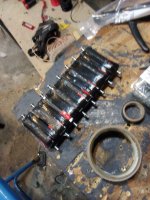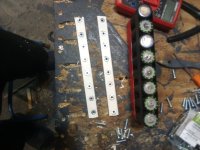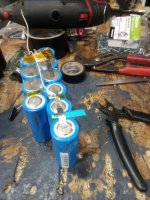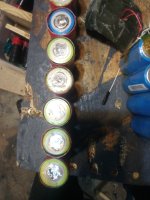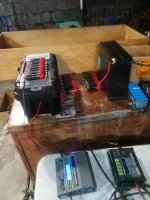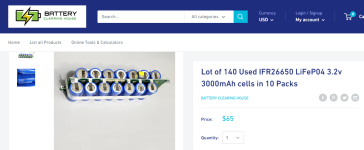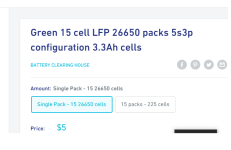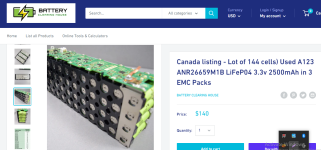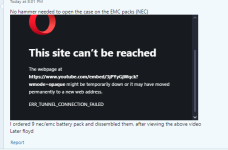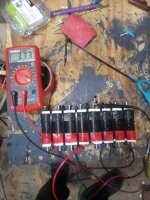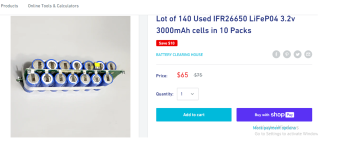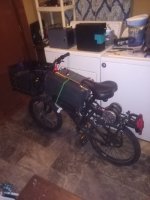My LTOs did 8 miles at 20 to 30 mph and see no issues. Cells are 2.48V to 2.56V. ALL 22 of them.
Balancing now with 12S 33V charger and 10S 28V. Looking perfect as cells are finally balanced.

They are now perfectly balanced.
I really don't need another 1500W kit when I already have one plus five other ebikes and #6 pending so might get a spot welder for Christmas.
Not sure. , Looking at other options maybe that require no welding or solder to the cells just the power wires.
I got a few ideas from reading old posts here and other forums so we will see what happens.
12/16/23
I did not even need glue. I cut strips of electric and max strength black duck. I drilled the holes in that 8 foot piece of plastic strip. It was about $5 with tax and less than $6 for the nuts and bolts.
First I used a Dremel tool to grind any pieces of the tabs and make sure good contact will happen for the bolts.
I used 3 drill bits to get the holes so would not split the material , Slightly smaller hole than the nut so can pound in with a hammer.
Lots of strips of electric and duck follow. Right now when I try each bolt it is firm contact. The next step is two strips of 12 gage wire. wrapped around each bolt. I want to strip long enough pieces to connect two cell banks in series.
Before I do it though I am temporary wiring 18 gauge for parallel charging at 2 amp. I will just wrap around each bolt twice and use small pieces of duct at the ends to hold it tightly in place. I can use the same wires over for parallel charging any banks in the future.
After the series connections strips of electric and duck will wrap around the top of each bolt and then strips all the way around the top.
All six banks will lay out on a table and when all balance wires are hooked up it will just fold up one bank on top of the other. A few more zip ties and some duck tape and will be ready for a custom wood box.
If it works I wont get a spot welder. I will use shorter bolts for any future packs. I got 3/4" and should have got 1/2".
11/16/23
There is no doubt it will work. That is a fact. The drawbacks are it takes a lot more time to do than spot welding. The drill bit makes sloppy holes and thin strips of tape is required to keep the nuts in place.
I actually taped all around the nuts to get a tight fit. I will also be taping over the tops of the bolts after the series connections are done and balance wires installed.so 100% positive that all cells will have contact with the bolts.
What I might do instead of ordering a spot welder is order a 3D printer. With 3D printed plastic strips with holes the nuts will simply slide in for a perfect fit. A very tiny amount of glue around the edge. Very little glue will be needed. No tape will be required. see pic below.
. Then all that will be needed is four zip ties the right length. I had to use two so the ends of the zip ties will add some space when stacking them.. I will need to replace with longer ties. Space is precious when building batteries.
The more compact the better. Stacking will work and only the width due to the bolts will be around 1 inch inch larger than a spot welded pack. The height and length will be equal or less than a spot welded pack. When I switch to 1/2" bolts then 1/2" wider than a spot welded pack.
The time it will take to install and glue in the nuts and zip tie and screw it together will be much shorter if no tape is required.
If the width of the box is exact enough then will be pressure against the top of the bolts with a tight fit. NO tape over the bolts will be required.
Also thick nickel strip like double or triple the thickness of what is used for spot welding can work by drilling holes and simply sliding it over the bolts with an extra nut to tighten it down..
Finally the other advantage is all the hardware can be re used to rebuild a wore out cell bank or even an entire pack. Hopefully someone with a 3D printer will take a look at this and start printing.
I was going to invest in a 3D printer awhile ago but the problem is how to find or create with the software. How would I go about designing such a thing. I no absolutely nothing about programming a 3D printer to print anything.
I have watched a lot of videos on 3D printers printing stuff so what I want to do would be easy as pie for just about any modern printer. Please let me know what you all think.
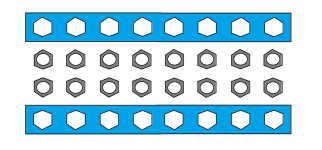
Thanks.
Skyler.
View attachment 342936View attachment 342937



